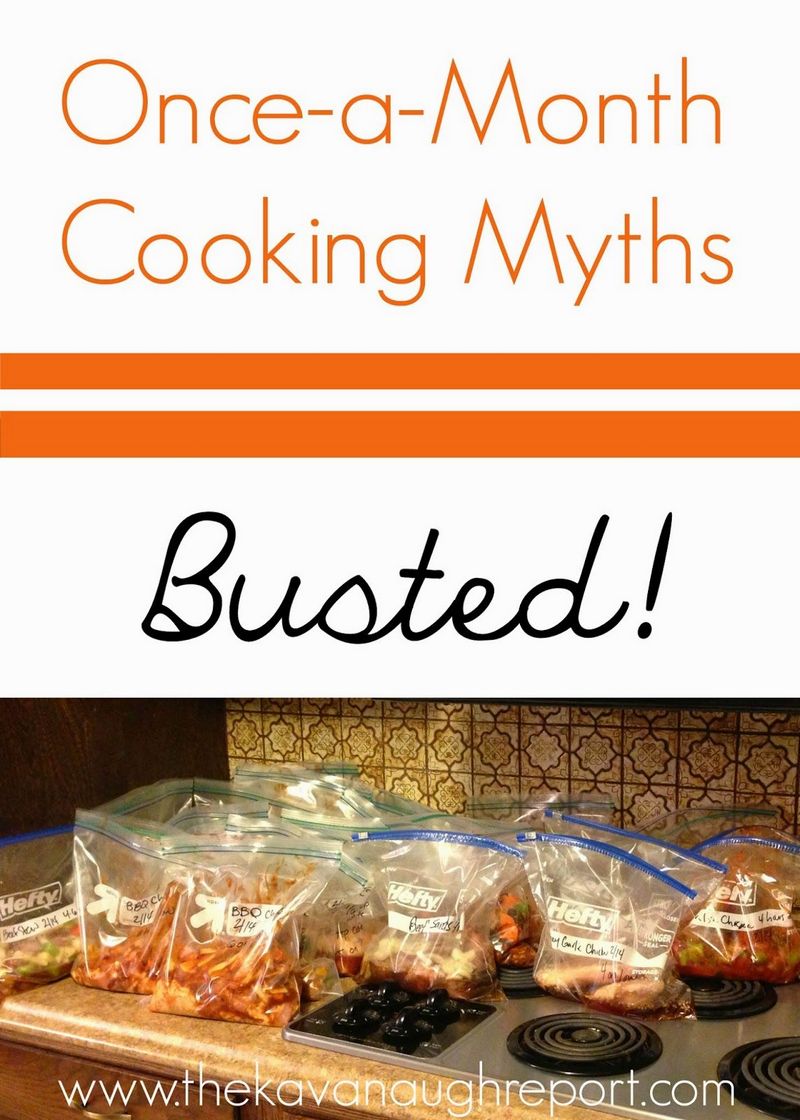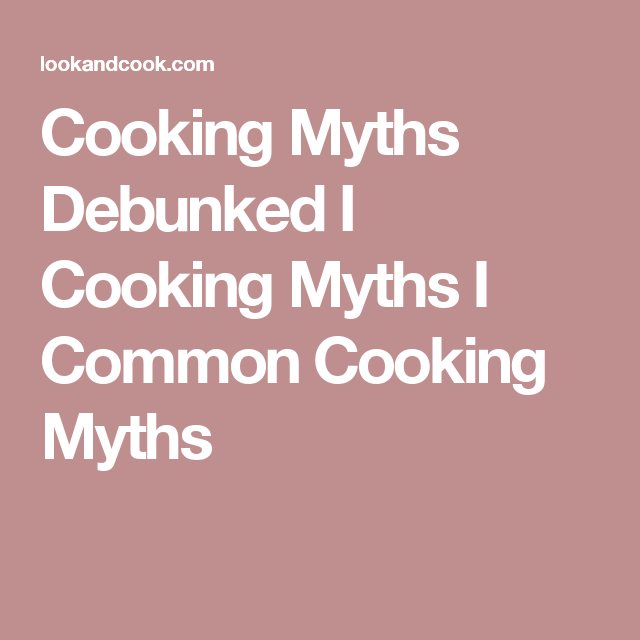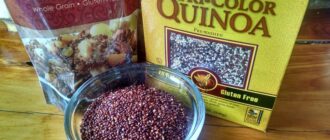
Busting Cooking Myths: What’s True and What’s Not
When it comes to cooking, there are countless myths and misconceptions that can lead to confusion and frustration in the kitchen. From old wives’ tales to misinformation spread on the internet, it’s important to separate fact from fiction in order to become a more confident and skilled cook. In this article, we will be busting some of the most common cooking myths and exploring what’s true and what’s not.
One of the most pervasive myths in cooking is that searing meat seals in the juices. Many people believe that by quickly browning the surface of a piece of meat, they are trapping the juices inside and ensuring a moist and flavorful end result. However, this is not true. While searing can create a delicious crust and add flavor to the meat, it does not actually seal in any juices. In fact, searing can actually cause some moisture to be lost, as the high heat can evaporate the liquid within the meat. The key to keeping meat juicy is to cook it to the proper temperature and let it rest before slicing.
Another common myth is that adding salt to water makes it boil faster. This is a myth that has been perpetuated for years, but it simply isn’t true. Salt does not affect the boiling point of water. The only thing adding salt to water does is add flavor to whatever is being cooked in it. So, if you want to add some flavor to your pasta or vegetables, go ahead and add salt to the water, but don’t expect it to make the water boil any faster.
One final myth that we will be debunking is the idea that flipping a steak only once is the best way to achieve a perfect crust. Many people believe that constantly flipping a steak will prevent it from developing a nice sear. However, this is not true. In fact, flipping a steak multiple times can actually result in a more even crust and a juicier end result. By flipping the steak every few minutes, you allow the heat to distribute more evenly, resulting in a more uniform sear. So, don’t be afraid to flip that steak and experiment with different cooking techniques.
Myth: Cooking with olive oil is unhealthy
There is a common myth that cooking with olive oil is unhealthy. However, this is not true. In fact, olive oil is one of the healthiest oils you can use in your cooking.
Many people believe that heating olive oil to high temperatures can cause it to break down and produce harmful compounds. While it is true that heating any oil can lead to the formation of smoke and potentially harmful substances, this is not unique to olive oil.
What’s important to note is that olive oil has a high smoke point, which means it can withstand higher cooking temperatures without breaking down. This makes it suitable for various cooking methods, including frying and sautéing.
Additionally, olive oil is rich in monounsaturated fats, which are considered heart-healthy fats. These fats can help improve cholesterol levels and reduce the risk of heart disease.
It’s also worth mentioning that olive oil is a key component of the Mediterranean diet, which is associated with numerous health benefits, including a reduced risk of chronic diseases like cancer, diabetes, and Alzheimer’s disease.
In summary, the myth that cooking with olive oil is unhealthy is not true. Olive oil is a nutritious and versatile cooking oil that can be enjoyed as part of a balanced diet.
Myth: Adding salt to water makes it boil faster
One of the most common myths in cooking is that adding salt to water makes it boil faster. However, this is not true. Salt does not affect the boiling point of water. The boiling point of water is determined by its atmospheric pressure, which is typically 100 degrees Celsius or 212 degrees Fahrenheit at sea level.
So, why do people believe that adding salt to water makes it boil faster? One reason may be that salt can increase the boiling point of water, but only if you add a significant amount of salt. In reality, the amount of salt that is typically added to cooking water is not enough to significantly raise the boiling point.
Another reason for this misconception may be that adding salt to water can make it taste better. Salt enhances the flavor of food, so adding it to cooking water can improve the taste of pasta, rice, or vegetables. However, this has nothing to do with the boiling time of the water.
In conclusion, the myth that adding salt to water makes it boil faster is just that – a myth. The boiling point of water is not affected by the addition of salt. So, next time you’re cooking, don’t worry about adding salt to water to make it boil faster. Instead, focus on using the right amount of salt for flavor and seasoning your dishes to perfection.
Myth: Searing meat seals in the juices
One of the most common cooking myths is that searing meat seals in the juices. Many people believe that by quickly browning the surface of the meat, the juices will be trapped inside, resulting in a juicier and more flavorful dish. However, this is not actually true.
When meat is seared, the high heat causes the proteins on the surface to denature and form a crust. This crust does create a delicious flavor and texture, but it does not act as a seal to keep the juices inside. In fact, searing can actually cause the meat to lose more moisture.
What’s really happening when you sear meat is that the high heat is causing the meat to undergo the Maillard reaction. This reaction is a chemical process that creates new flavors and aromas, giving the meat a delicious caramelized crust. However, it does not have any effect on the meat’s ability to retain moisture.
So, if you want to keep your meat juicy and tender, it’s important to cook it properly and not rely on searing alone. Using a meat thermometer to ensure the meat is cooked to the desired temperature is key. Additionally, allowing the meat to rest after cooking will help redistribute the juices and result in a more flavorful and moist dish.
Myth: Putting metal in the microwave will cause a fire
One of the most common cooking myths is that putting metal in the microwave will cause a fire. This myth is not true and can be easily debunked. While it is true that metal can cause sparks and potentially damage the microwave, it does not automatically lead to a fire.
When metal is placed in the microwave, it can reflect the microwaves and cause them to bounce around the inside of the microwave. This can result in sparks and potentially damage the microwave. However, modern microwaves are equipped with safety features such as a metal shield and a safety cut-off switch that automatically shuts off the microwave if sparks are detected.
It is important to note that not all types of metal are safe to use in the microwave. Metal containers or utensils with sharp edges or a high metal content should not be used, as they can cause arcing and damage the microwave. However, some types of metal, such as aluminum foil or microwave-safe metal containers, can be safely used in the microwave.
To avoid any potential risks, it is recommended to always read the manufacturer’s instructions and guidelines before using metal in the microwave. If in doubt, it is best to use microwave-safe containers and utensils made of glass, ceramic, or microwave-safe plastic.
Myth: You can’t cook a frozen steak
One of the common myths in cooking is that you can’t cook a frozen steak. However, this is far from the truth. While it’s true that cooking a frozen steak requires some adjustments to the cooking time and temperature, it is definitely possible and can result in a delicious meal.
So, what’s the truth behind this myth? The main reason people believe that you can’t cook a frozen steak is because they think it won’t cook evenly. However, with the right technique, you can achieve a perfectly cooked steak, even if it’s frozen.
The key to cooking a frozen steak is to use a low and slow cooking method. This means starting the steak in a low-temperature oven or on a low-temperature grill, and gradually increasing the heat as the steak thaws and cooks. This allows the steak to cook evenly and prevents it from becoming overcooked on the outside and undercooked on the inside.
Another important step when cooking a frozen steak is to season it properly. Since the steak is frozen, the seasoning won’t penetrate the meat as easily. To ensure that the steak is well-seasoned, it’s recommended to season it generously with salt and pepper before cooking. This will help to enhance the flavors and ensure that the steak is delicious.
So, the next time you find yourself with a frozen steak and a craving for a delicious meal, don’t hesitate to bust this common myth. With the right technique and a little patience, you can cook a frozen steak that is tender, juicy, and full of flavor.
Myth: Washing chicken before cooking removes bacteria
One of the common misconceptions in the kitchen is that washing chicken before cooking it will remove bacteria. However, this is not true and can actually increase the risk of foodborne illnesses.
When you wash chicken, water can splash and spread bacteria onto your kitchen surfaces, utensils, and other foods. This can lead to cross-contamination, where harmful bacteria from the raw chicken can contaminate other foods, causing food poisoning.
It’s important to note that cooking chicken to the proper internal temperature is the most effective way to kill bacteria. The Centers for Disease Control and Prevention (CDC) recommends cooking chicken to an internal temperature of 165°F (74°C) to ensure that any harmful bacteria, such as salmonella or campylobacter, are destroyed.
Instead of washing chicken, it is best to handle it properly to reduce the risk of contamination. This includes keeping chicken separate from other foods, using separate cutting boards and utensils for raw chicken, and washing your hands thoroughly after handling raw chicken.
By busting this myth and understanding the proper cooking techniques, you can ensure that you are preparing chicken safely and minimizing the risk of foodborne illnesses.
Myth: Using a wooden cutting board is more hygienic than a plastic one
When it comes to cooking, there are many myths and misconceptions that can confuse even the most experienced chefs. One common myth is that using a wooden cutting board is more hygienic than a plastic one. However, this is not true.
While wooden cutting boards have been used for centuries and are often seen as a traditional and natural choice, research has shown that plastic cutting boards are actually more hygienic. The reason for this is that plastic cutting boards are non-porous, which means they do not absorb bacteria and are easier to clean and sanitize.
Wooden cutting boards, on the other hand, have a porous surface that can trap bacteria and food particles, making them more difficult to clean thoroughly. This can lead to cross-contamination and an increased risk of foodborne illnesses.
So, if you’re looking to keep your kitchen clean and hygienic, it’s best to opt for a plastic cutting board. Make sure to choose one that is made of high-quality, food-grade plastic and clean it thoroughly after each use. Remember, busting cooking myths is all about separating fact from fiction to ensure safe and delicious meals!
Myth: Alcohol completely evaporates when cooked
When it comes to cooking myths, one of the most common misconceptions is that alcohol completely evaporates when cooked. However, this is not entirely true. While it is true that alcohol does evaporate when exposed to heat, it does not evaporate completely.
Alcohol has a lower boiling point than water, so when it is heated, it evaporates faster. However, even after prolonged cooking, there will still be some alcohol remaining in the dish. The amount of alcohol that remains depends on various factors such as cooking time, temperature, and the amount of alcohol used in the recipe.
It’s important to note that the alcohol content in the dish may not be significant enough to cause intoxication, but it can still be detected. So, if you are cooking for someone who is avoiding alcohol for health or personal reasons, it’s best to be aware of this and choose recipes that do not include alcohol as an ingredient.
So, the next time you hear someone say that alcohol completely evaporates when cooked, you can confidently bust this myth and explain that while it does evaporate to some extent, it does not evaporate completely. It’s always important to be informed about what’s true and what’s not when it comes to cooking myths.
Myth: Cooking with a lid on traps flavors
One of the common cooking myths is that cooking with a lid on traps flavors. This misconception has been passed down through generations, leading many home cooks to believe that covering a pot or pan while cooking will enhance the flavor of the dish. However, this myth is not entirely true.
What’s true is that cooking with a lid on can help to retain moisture in the food, preventing it from drying out. This is particularly beneficial when cooking meats or dishes that require a longer cooking time. The trapped moisture can help to tenderize the meat and keep it juicy. Additionally, covering the pot or pan can also help to speed up the cooking process by creating a more controlled environment.

However, when it comes to flavors, cooking with a lid on may actually hinder the development of certain flavors. When food is cooked uncovered, the flavors have the opportunity to evaporate and concentrate, resulting in a more intense taste. On the other hand, cooking with a lid on can trap steam and condensation, diluting the flavors and leading to a less flavorful dish.
So, while cooking with a lid on can be beneficial for retaining moisture and speeding up the cooking process, it may not always result in the most flavorful outcome. It’s important to consider the specific dish and ingredients being used to determine whether covering the pot or pan is necessary. Busting this myth can help home cooks make more informed decisions in the kitchen and create dishes that are both moist and flavorful.
Myth: Thawing meat at room temperature is safe
One of the most common myths in the kitchen is the belief that thawing meat at room temperature is safe. However, this is not true. Thawing meat at room temperature can actually be dangerous and increase the risk of foodborne illnesses.
When meat is left at room temperature, it provides an ideal environment for bacteria to grow and multiply. Bacteria can double in number every 20 minutes at room temperature, which means that even a short period of thawing can lead to a significant increase in bacteria.
Thawing meat at room temperature can also result in uneven thawing. The outer layer of the meat may thaw while the inside remains frozen, creating the perfect conditions for bacteria to thrive. This can increase the risk of food poisoning, as the bacteria may not be killed during the cooking process.
So, what’s the best way to thaw meat? The safest method is to thaw meat in the refrigerator. This allows for a slow and even thawing process, reducing the risk of bacterial growth. It is important to place the meat on a plate or in a container to catch any juices that may leak during the thawing process.
If you need to thaw meat quickly, you can use the cold water method. Place the meat in a leak-proof plastic bag and submerge it in cold water. Change the water every 30 minutes to ensure that it stays cold. This method can thaw meat faster than the refrigerator method, but it is important to cook the meat immediately after thawing.
In conclusion, the myth that thawing meat at room temperature is safe is not true. Thawing meat at room temperature can increase the risk of foodborne illnesses and should be avoided. It is best to thaw meat in the refrigerator or using the cold water method to ensure safe and proper thawing.
Myth: Using a higher heat setting cooks food faster
One of the common misconceptions in cooking is that using a higher heat setting will cook food faster. However, this is not always true. While increasing the heat can certainly speed up the cooking process for some dishes, it is not a universal rule.
Cooking involves a delicate balance of time and temperature. Different ingredients and cooking methods require specific heat settings to achieve the desired results. For example, when cooking meat, using a higher heat setting may sear the outside quickly, but the inside may remain undercooked. It is important to follow the recommended cooking temperatures and times for each dish.
Using a higher heat setting can also lead to burnt or charred food. This is especially true for delicate ingredients like vegetables or fish. Higher heat can cause the outer layers to burn while the inside remains raw. It is better to use a lower heat setting and allow the food to cook evenly.
Another factor to consider is the type of cookware being used. Some materials, such as cast iron, retain heat well and distribute it evenly. Others, like stainless steel, may heat up quickly but have uneven heat distribution. Adjusting the heat setting based on the cookware can help ensure even cooking.
In conclusion, the myth that using a higher heat setting cooks food faster is not always true. It is important to understand the specific needs of each dish and adjust the heat accordingly. Following recommended cooking temperatures and times, using the right cookware, and allowing food to cook evenly are key to achieving delicious and properly cooked meals.
Myth: Adding oil to pasta water prevents sticking
One of the most common cooking myths is that adding oil to pasta water will prevent the pasta from sticking together. However, this is not true.
When you add oil to the pasta water, it forms a thin layer on the surface of the water. This layer does not actually prevent the pasta from sticking together. Instead, it can prevent the sauce from adhering to the pasta, resulting in a less flavorful dish.
The best way to prevent pasta from sticking together is to use a large pot with plenty of water and to stir the pasta frequently while it cooks. This will help to separate the strands and prevent them from clumping together.
Additionally, it’s important to properly salt the pasta water. This not only adds flavor to the pasta, but it also helps to prevent the strands from sticking together.
So, next time you’re cooking pasta, skip the oil and focus on using plenty of water, stirring frequently, and properly salting the water to ensure perfectly cooked, non-sticky pasta.
Myth: Adding sugar to yeast helps it rise
When it comes to baking bread or making other yeast-based recipes, there are many myths and misconceptions about what helps yeast to rise. One common myth is that adding sugar to yeast helps it rise. However, this is not entirely true.
While sugar can provide food for yeast and help it to grow, it is not necessary for the yeast to rise. Yeast is a living organism that feeds on sugar and produces carbon dioxide gas, which causes the dough to rise. However, yeast can also feed on other sources of sugar, such as the carbohydrates in flour.
In fact, adding too much sugar to yeast can actually hinder its ability to rise. Yeast needs a balanced environment to grow and thrive, and adding excessive amounts of sugar can throw off this balance. Too much sugar can also cause the yeast to ferment too quickly, resulting in a dough that rises too fast and then collapses.
So, while adding a small amount of sugar can help to activate and feed the yeast, it is not necessary for the yeast to rise. The key to successful yeast rising is providing the yeast with a warm, moist environment and giving it enough time to do its job. By understanding the science behind yeast fermentation, you can bust this common cooking myth and achieve better results in your baking.
Myth: Marinating meat tenderizes it
One of the most common cooking myths is that marinating meat will automatically tenderize it. However, this is not entirely true. While marinating can add flavor to the meat, it does not have a significant tenderizing effect on its own.
What’s important to understand is that marinating meat primarily affects the outer layers, not the interior. The marinade ingredients, such as acidic liquids like vinegar or citrus juices, can break down the surface proteins and make the meat appear more tender. However, these effects are mostly superficial and do not penetrate deep into the meat.
To truly tenderize meat, other methods such as pounding or using a meat tenderizer tool are more effective. These techniques physically break down the muscle fibers, resulting in a softer and more tender texture. Marinating can complement these methods by adding additional flavors, but it is not the main factor in tenderizing the meat.
So, while marinating meat can enhance its taste and add moisture, it should not be relied upon as the sole method for tenderization. To achieve truly tender meat, it’s important to understand the different techniques and choose the most appropriate method for the specific cut of meat you are cooking.
Myth: Overcooking vegetables removes all nutrients
When it comes to cooking vegetables, there are many myths and misconceptions about how it affects their nutritional value. One common myth is that overcooking vegetables completely removes all their nutrients. However, this is not entirely true.
While it’s true that cooking can cause some loss of nutrients in vegetables, the extent of this loss depends on various factors such as cooking time, method, and the type of vegetable. Some nutrients, like vitamin C, are more sensitive to heat and can be partially destroyed during cooking. However, other nutrients, such as carotenoids, are actually enhanced by cooking, as heat breaks down the cell walls and makes them more available for absorption.
It’s also important to note that not all vegetables are affected in the same way by cooking. Some vegetables, like broccoli and Brussels sprouts, retain their nutrients better when lightly cooked, while others, like tomatoes, actually benefit from longer cooking times. The key is to find the right balance between cooking time and preserving the nutritional value of the vegetables.
So, while it’s true that overcooking vegetables can lead to some nutrient loss, it’s not accurate to say that all nutrients are completely removed. By understanding the cooking methods and their effects on different vegetables, we can make informed decisions and ensure that we still get the most out of our vegetables, both in terms of flavor and nutrition.
Myth: Cutting meat against the grain makes it more tender
One of the common myths in cooking is that cutting meat against the grain makes it more tender. However, this is not entirely true. While cutting against the grain can make the meat easier to chew, it doesn’t necessarily make it more tender.
The grain of meat refers to the direction in which the muscle fibers are aligned. When you cut against the grain, you are essentially cutting through these muscle fibers, making them shorter and therefore easier to chew. However, the tenderness of the meat is primarily determined by factors such as the cut of meat, cooking method, and cooking time.
For example, a tough cut of meat like a flank steak can be made more tender by marinating it or using a slow cooking method. On the other hand, a tender cut of meat like a filet mignon doesn’t necessarily need to be cut against the grain to be enjoyed. It is already naturally tender.
So, while cutting against the grain can improve the texture of some cuts of meat, it is not a foolproof method for achieving tenderness. It’s important to consider other factors in the cooking process to ensure the meat is cooked to perfection.
Myth: Preheating the oven is unnecessary
One of the most common cooking myths is that preheating the oven is unnecessary. However, this is not true. Preheating the oven is a crucial step in cooking and can greatly affect the outcome of your dishes.
When you preheat the oven, you allow it to reach the desired temperature before you start cooking. This ensures that your food cooks evenly and at the right temperature from the very beginning. Without preheating, your food may not cook properly, resulting in unevenly cooked dishes.
Another reason why preheating is important is that it helps to activate certain ingredients. For example, when baking, preheating the oven helps to activate the leavening agents, such as baking powder or baking soda, which are responsible for making your baked goods rise. Without preheating, your baked goods may not rise properly and could turn out dense and flat.
So, what’s the best way to preheat your oven? It’s simple. Just set the desired temperature on your oven and allow it to heat up for about 10-15 minutes. This will ensure that your oven is at the correct temperature before you start cooking.
Next time you’re in the kitchen, remember to preheat your oven. Don’t let this common cooking myth fool you. Preheating is an essential step in cooking and can make a big difference in the outcome of your dishes.
FAQ:
Is it true that you should rinse pasta after cooking?
No, it is actually not necessary to rinse pasta after cooking. Rinsing removes the starch that helps the sauce adhere to the pasta, resulting in a less flavorful dish.
Can you really substitute baking powder for baking soda?
No, baking powder and baking soda are not interchangeable. Baking powder contains baking soda, but it also contains an acid, which helps with the leavening process. Baking soda, on the other hand, needs an acid to activate it.
Do you really need to preheat the oven?
Yes, preheating the oven is important for baking. It ensures that the food will cook evenly and at the correct temperature. Skipping the preheating step can result in undercooked or unevenly cooked food.
Is it true that you should only flip a steak once?
No, flipping a steak multiple times during cooking can actually result in a more evenly cooked and tender steak. Flipping the steak once can cause the bottom to overcook while waiting for the top to cook.
Can you really test the freshness of eggs by placing them in water?
Yes, you can test the freshness of eggs by placing them in water. Fresh eggs will sink to the bottom and lay flat, while older eggs will stand on one end or float to the top. This is due to the air cell inside the egg increasing in size as it ages.





